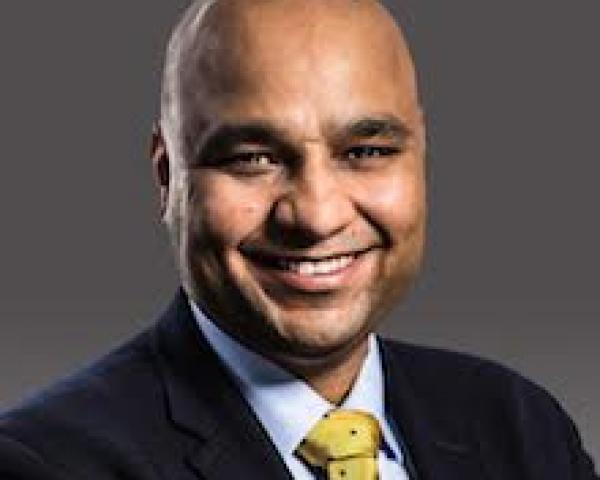As we prepare for what could be a very active hurricane season, we pause to reflect on what we learned from last year’s historic storms.
Even from the sky, it was heartbreaking to see the devastation from flooded neighborhoods, destroyed homes, submerged cars and people left homeless in Texas, Florida and beyond.
Together, Hurricane Harvey and Hurricane Irma cost billions and served as a stress test for the insurance industry.
Munich RE named the 2017 hurricane season as
the costliest on record, resulting in $215 billion in losses. According to the reinsurance company, last year’s disasters totaled $330 billion in losses—just $135 billion of which was insured.
Hurricanes Harvey, Irma and Maria, as well as the California wildfires at the end of 2017, represented the bulk of last year’s storm damage. The National Oceanic and Atmospheric Administration (NOAA) lists 16 weather events that resulted in $1 billion or more each in losses. These catastrophes totaled $306.2 billion in damage, the NOAA reports, and
eclipsed the prior cost record of $214.8 billion in 2005.
EagleView had a unique view into what the industry was facing. We mobilized a fleet of 120 fixed-wing aircraft to capture millions of high-resolution images of the affected areas as well as referencing satellite and drone imagery. From there, we applied machine learning to quickly analyze property data to help carriers begin triaging and processing claims.
See also: Hurricane Harvey’s Lesson for Insurtechs
While no one welcomes disasters, the storms, fires and mudslides may have accelerated the insurance industry’s response to catastrophic events. An army of adjusters with clipboards and flashlights will no longer cut it. The industry must evolve.
Here are four lessons we learned firsthand during the 2017 hurricane season.
1. Take advantage of the calm before the storm.
As we saw in 2017, catastrophes can wreak financial havoc on an insurer’s books. Naturally, carriers want to mitigate those costly exposures to risk before they might occur.
At the time of quoting, machine learning can help assess risk. With comprehensive property data analytics, a carrier can eliminate “buying a claim” when binding the policy, thus ensuring the right rate for the right risk. During the renewal process, understanding any change to that risk can help a carrier try to minimize claim frequency and severity.
2. Make boots on the ground smarter with eyes in the sky.
Experienced, licensed adjusters bring a level of expertise that can be hard to replicate, especially following a natural disaster. But they can only cover so much territory, especially if they are hard to find.
That’s what happened in Florida when Irma hit. Insurers had to scramble to find adjusters. Yet many were, as the
Wall Street Journal pointed out at the time, “1,000 miles away, working on claims made after Hurricane Harvey hit Texas.”
To ensure proper coverage, insurers can work with partners in advance to put the right tools in place before a storm. For EagleView, that sometimes meant staging our aircraft hundreds of miles away from the hurricane so that we could get in the air as soon as the FAA gave us the go-ahead.
Complementing the adjuster force with the right aerial imagery program will give insurers greater confidence that they’ll be able to answer their customers’ needs quickly and accurately. Some carriers saw as much as a 60% improvement in adjuster production when they applied aerial imagery and data analysis solutions.
3. Don’t fly blind.
Drones are important assets in property inspection, but they’re an imperfect solution by themselves. While the FAA’s Part 107 rule guiding small unmanned aircraft offers greater flexibility to fly in national airspace, certain restrictions can still prove cumbersome.
Namely, the drone must remain in the line of sight. During an inspection of a large property with multiple outbuildings, for instance, the pilot must move around the property to keep the drone in sight.
Time is another constraint when it comes to operating a drone. Without
the appropriate waiver from the FAA, a pilot can only fly in daylight or twilight, which makes conducting thermal imaging to detect roof leaks challenging.
Because some small drone operators were unable to meet the demands of large carriers, some insurers abandoned their drone programs altogether. Others have minimized the number of drone assignments, hired and coordinated a collection of disparate drone pilots or simply conducted re-inspections themselves.
Not only is that inefficient, but it sets the carrier up for a bad customer experience. A better approach? Carriers should use a mix of satellites, fixed-wing planes, drones and field inspectors to run an effective inspection program. A variety of information sources—rather than a single inspection method—will deliver the most comprehensive claims data.
4. Maintain customer satisfaction with speed.
The good news, according to
a JD Power report, is that “overall customer satisfaction among homeowners filing property insurance claims has reached a new all-time high, despite record-high property losses following a spate of hurricanes, earthquakes and fires in North America” in 2017. However, the report goes on to tell us that there’s wide variability in performance by region, noting that customer satisfaction in Texas and Florida—two of the areas hardest hit by hurricanes—show below-average results.
Speed in resolving issues is a critical factor in retaining high satisfaction levels. That means carriers need to ensure a partner has a large breadth of capture and processing resources.
See also: Getting to ‘Resilient’ After Harvey and Irma
Carriers need to feel confident that their vendors can scale. In a catastrophic situation, technology partners must be able to meet the demands of their clients with drones, satellites, fixed-wing aircraft and field inspectors, and deploy those solutions immediately.
Applying these lessons to 2018
With the record-breaking disasters of 2017, could 2018 be similar? We haven’t yet figured out how to predict or prevent natural disasters like the ones we faced last year.
What we have learned from these experiences, however, will surely help the industry better deal with this year’s crop of storms. That should be good news for insurers and the people they serve.


